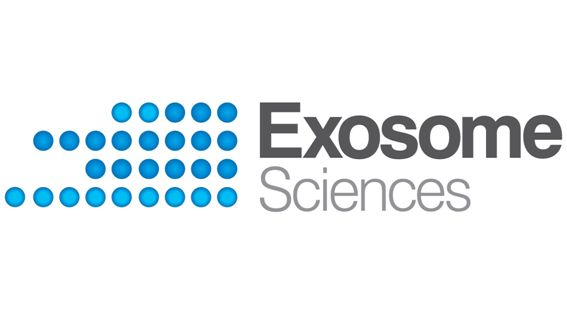08:00 | Continental Breakfast in the Exhibit Hall and Networking |
|
Session Title: The Study of Exosomes and Other Classes of Extracellular Vesicles (EVs). |
| |
|
Session Chairs: Dominique de Kleijn, Ph.D. and Johan Skog, Ph.D. |
| |
08:30 |  | Keynote Presentation Nanoparticle Flow Cytometry of Individual Extracellular Vesicles
John Nolan, CEO, Cellarcus Biosciences, Inc., United States of America
Extracellular vesicles (EVs) released from cells have attracted much attention as potential biomarkers and therapeutic targets, but their small size presents a challenge for analysis. Because EVs can originate from many cell types and from different membrane compartments within a cell, EVs from blood or other fluids are intrinsically heterogeneous, and require a multiparameter measurement approach to identify sub-populations that might have physiological relevance. Flow cytometry is perhaps the most widely used multiparameter single particle analysis platform, but commercial instruments lack the sensitivity to detect the vast majority of EVs. We have developed a custom Nanoparticle Flow Cytometer (NFC) and associated methods that can rapidly analyze individual membrane vesicles as small as 70 nm in diameter and resolve particles with less than 100 fluorescent antibodies bound to their surface. I will describe the measurement principles of the NFC, calibration and validation experiments, and present results of EV measurements of cell culture supernatants and blood. This ability to make quantitative, multiparameter measurements of individual EVs will be a key to understanding the roles of these nanoparticles in health and disease. |
|
09:15 | Live-Cell Imaging of Extracellular Vesicles with Single Molecule Sensitivity
Emanuele Cocucci, Instructor, Boston Childrens Hospital and Harvard Medical School, United States of America
Extracellular vesicles (EVs) are membrane bound objects released by cells in the outer space, either upon fusion of multivesicular bodies with the plasma membrane (exosomes), or by direct outward budding of the plasma membrane (ectosomes). EVs retain proteins and nucleic acids of the donor cells and fuse within acceptor cells. The released content can influence the target cell behavior. Numerous classes of EVs exist, showing differences in size composition and origins. Therefore, a thoughtful study of the EV traffic is essential to define which specific classes are competent for influencing the target cells. State of the art spinning-disk confocal microscopy, coupled with computational tools, allows nowadays to detect few fluorescent molecules and to follow their trafficking in monitored cells in real-time. The application of these approach on EVs traffic will elucidate which endocytic routes are followed by the EVs, which EV subclasses are competent for fusing with endomembrane and in which subcellular compartment. The acquired knowledge will shed light on EV competence for transferring information among cells and the key EV properties which can be exploited to develop next generation drug delivery nanoparticles. |
09:45 | Circulating microRNAs in Cancer: Tissue Origin and Correlation with Tumor Expression
Adam Pavlicek, Associate Director, Bioinformatics, Regulus Therapeutics, Inc., United States of America
Circulating microRNAs are promising candidates as minimally-invasive biomarkers for tumor detection, disease monitoring, and patient stratification. Changes in serum microRNAs have been reported for many tumor types. However, how well global changes in tumor microRNA expression are reflected in circulating microRNAs is less understood. Using a mouse genetic model of HCC, we found that that serum microRNA pro¬files reflect both changes in the tumor tissues and systemic response to tumor burden. The serum-specific alteration included microRNAs linked to immune response, liver injury and other systemic responses to the tumor burden. Interestingly, most of the changes in both liver and serum are reversed upon inhibition of the driving oncogene. This pre-clinical proof-of-concept demonstrates that circulating microRNAs are suitable candidates for tumor detection as well as monitoring disease progression and treatment response. |
10:15 | Coffee Break and Networking with Exhibitors in the Exhibit Hall |
10:45 |  | Keynote Presentation How to Leverage the Power of Exosomes in Diagnostics
Johan Skog, Chief Scientific Officer, Exosome Diagnostics Inc, United States of America
Biofluid molecular diagnostics have generated a lot of interest the recent years, especially with new emerging platforms that enable low abundant tumor transcripts and mutations to be detected even from biobanked plasma and urine. Using biofluids as a surrogate for tissue to monitor the progression of disease processes is highly desirable for diseases like cancer where the genetic status of biopsies taken prior to treatment may not be relevant later in disease. The exosome platform allows for recovery of high quality nucleic acid for analysis of tumor derived mutations, splice-variants, and enables RNA profiling to stratify patients and monitor treatment efficacy on longitudinal samples. The latest data from Exosome Diagnostics improvements in detection methods of rare variants as well as improving the yield of tumor derived mutations from plasma will be presented. |
|
11:30 | Role of Exosomes and Microvesicles in Multiple Myeloma
Flavia Pichiorri, Assistant Professor, The Ohio State University, United States of America
Multiple myeloma (MM) is a hematological malignancy of plasma cells in the bone marrow (BM). The microenvironment of the BM plays a key role in MM cell persistence and survival through release of soluble factors and expression of adhesion molecules. The role of extracellular vesicles, exosomes and microvesicles, in this model of MM, has not been readily explored. We were the first one to characterize the protein content and relative abundance of vesicles derived from distinct MM cell lines. We established differences in protein abundances between MM patient’s serum and bone marrow derived vesicles when compared to healthy donor extracellular vesicles. During my talk I will show that serum CD44 is primarily localized to the peripheral vesicles of MM patients and that extracellular vesicles associated CD44(EV-CD44) positively correlates with serum ß2 microglobulin levels, serum creatinine and ISS stage suggesting EV-CD44 can function as a biomarker of MM. These results generate a foundation for hypothesis driven studies of MM biology and the potential use of serum CD44 as a novel serum biomarker of MM. |
12:00 | RNA Signatures Associated with Brain Injury and Disease
Kendall Van Keuren-Jensen, Professor and Deputy Director, Translational Genomics Research Institute, United States of America
One of our goals has been to examine the extracellular RNA contents in cell-free biofluids to identify markers of brain injury and disease. We have examined multiple biofluid types from patients with head trauma and neurodegenerative disease. We discuss the utility of each biofluid in reliably reflecting injury and we will discuss common and specific RNAs that are altered by injury and disease. |
12:30 | Networking Lunch in the Exhibit Hall, Meet the Exhibitors, and View Posters |
|
Session Title: Exosomes, Microvesicles, CTCs -- Convergent Technologies and Biomarker Potential. |
| |
|
Session Chairs: Leonora Balaj, Ph.D. and Sasha Vlassov, Ph.D. |
| |
13:30 |  Technology Spotlight: Technology Spotlight:
Immuno-Affinity Magnetic Beads Based Exosome Isolation Method
Kenneth Henry, Senior Research Scientist, JSR Micro, Inc.
In order to isolate exosomes from various body fluids and cell culture supernatants, we have successfully developed ExoCapTM Isolation Kits, which utilizes a magnetic beads based isolation method. ExoCap consists of magnetic particles coupled with antibodies that recognize antigens on the exosome surface, a diluent/ washing solution, and a reagent that releases the captured intact exosomes for analysis. The antibodies against CD9, CD63, CD81, and EpCAM were specifically selected for this kit. ExoCap can easily and rapidly separate exosomes within 30 minutes, without an ultracentrifuge or any special equipment. In exosome rich samples, as little as 100 µL is a sufficient sample volume for the isolation of exosomes that are compatible with various downstream analysis such as western blots RT-qPCR or electron microscopy. ExoCap allows the enrichment of a pure population of specific exosomes based upon target antigen.
|
13:50 |  Technology Spotlight: Technology Spotlight:
Tools for Exosome and Single Cell Analysis Research
Bernard Lam, Senior Research Scientist, Norgen Biotek Corporation
|
14:10 |  Technology Spotlight: Technology Spotlight:
Extracorporeal Clearance of Tumor-Secreted Exosomes, An Adjunct Strategy to Improve Cancer Treatment Outcomes
James Joyce, Chairman & CEO, Aethlon Medical, Inc.
|
14:30 |  | Keynote Presentation Plasma Extracellular Vesicle Content as Biomarker Source for Cardiovascular Disease
Dominique PV de Kleijn, Professor Experimental Vascular Surgery, Professor Netherlands Heart Institute, University Medical Center Utrecht, The Netherlands, Netherlands
Cardiovascular Disease (CVD) is with the cardiovascular events of Ischemic Heart Disease and Stroke, the number 1 and 2 cause of death in the world and expect to increase especially in Asia. Atherosclerosis is the underlying syndrome for CVD and atherosclerotic plaques are detectable already in teenagers. Therefore for cardiovascular disease, we have to determine who is at high risk for a cardiovascular event in a high-risk background of the atherosclerotic syndrome without the possibility of taking a plaque biopsy. The risk for Cardiovascular events is region-dependent so tailored plasma-based biomarkers are essential to guide prevention and treatment of billions.
Collecting plasma extracellular vesicles is like taking a liquid biopsy from the pathological tissue that can be used for diagnosis and prognosis of the disease. Using biobanks of different ethnicities with large numbers of patients, we show that plasma extracellular vesicle content can be used as an accurate source for diagnosis and prognosis of cardiovascular disease. |
|
15:15 | Coffee Break and Networking with Exhibitors in the Exhibit Hall |
15:45 |  Technology Spotlight: Technology Spotlight:
Streamlining Single-Cell RNA Sequencing Analysis for Biologists with the Maverix Analytic Platform
Byung-in Lee, Vice President, Product Operations, Maverix Biomics, Inc.
With the advancement of single-cell sequencing methodologies, the demand for analytic tools to handle complex data has grown rapidly. We will present the Maverix Analytic Platform, a cloud-based environment built for biologists that leverages best-in-class tools and provides an integrated UCSC-genome browser to enable visualization of results in broad context.
|
16:00 |  Technology Spotlight: Technology Spotlight:
Particle Tracking Analysis (PTA): Size and Charge Fingerprints of Exosomes
David Palmlund, Technical Sales Engineer, Microtrac
In the field of nanoparticle characterization, zeta potential has long been known as measure for stability and particle-particle interactions and is a physical-chemical parameter. However, the characterization of low concentrated nanoparticle suspensions, such as exosomes, is challenging.
Particle Tracking Analysis (PTA) is a technique where single particles of the sample are visualized and traced. By analysis of the particle traces, the PTA device (ZetaView®, Particle Metrix, Germany) performs the measurement of particle size, concentration and zeta potential of exosomes in one experiment. As the zeta potential is affected by pH and ionic strength, even more information about the sample can be gained by variation of buffer composition, resulting in discrete charge fingerprints. We utilize the advantages of PTA with emphasis on practical aspects relevant for exosome characterization. Potential applications, such as monitoring of pH sensitive exosome-exosome interactions in combination with multiparameter characterization will be discussed on selected examples.
|
16:15 | ExRNAs as Biomarkers for Placental Dysfunction
Louise Laurent, Associate Professor, University of California-San Diego, United States of America
Placental dysfunction, most commonly manifested as preeclampsia or intrauterine growth restriction, is an important cause of maternal and fetal morbidity and mortality in both the developing and developed world. It is thought that placental dysfunction arises from abnormal trophoblast differentiation and/or invasion, events that occur in the first trimester of pregnancy, but become clinically apparent only in the late second and third trimesters. Optimal surveillance and management of placental dysfunction, as well as the development of effective therapies, have been hampered by the lack of methods for early and accurate identification of pregnancies at risk for this disorder. We will discuss pregnancy-specific ExRNA profiles and the potential for ExRNAs as biomarkers for placental dysfunction and other adverse pregnancy outcomes. |
16:45 | Extracellular Vesicles in Cancer Signaling Pathways
Michael Graner, Professor, Dept of Neurosurgery, University of Colorado Anschutz School of Medicine, United States of America
Extracellular vesicles (EVs) are virus-sized membrane-enclosed vesicles that are released by cells via various mechanisms. Their contents reflect the molecular make-up of their cells of origin, and thus EVs show potential as biomarkers. EVs also serve as packets of signal initiators and transducers with effects proximal and distal to their release. Here we show that EVs from brain tumor cells have profound impacts on recipient cells (both tumor cells and normal cells) in terms of proteomic changes and induced signaling cascades. Most of these changes can be regarded as benefiting the tumor. The abilities of EVs to influence phenotypes and activities of recipient cells are likely among the most important functions of EVs. In a tumor setting, this knowledge may help us design better therapeutic strategies based on a continuous dynamic rather than static assumptions about the status of a cancer. |
17:15 | Salivary Exosomes: Clinical Utilities and Biology
David Wong, Felix and Mildred Yip Endowed Chair in Dentistry; Director for UCLA Center for Oral/Head & Neck Oncology Research, University of California-Los Angeles, United States of America
Salivary extracellular RNA (exRNA) and protein have been demonstrated to possess clinical utilities as biomarkers for early detection of oral and systemic diseases. More recently salivary exRNA were shown to be contained in exosomes, shuttling disease-specific exRNA from the disease organs via blood stream to salivary glands and into saliva as disease-specific salivary biomarkers. |
17:45 | CTCs as Exploratory Biomarkers in Early Clinical Trials
Steven Pirie-Shepherd, Director, Pfizer, United States of America
- How do we define, collect, enumerate and characterize CTCs in early clinical trials?
- What is Pharma looking for in the ‘perfect’ CTC assay platform?
- What are the challenges in developing and deploying these assays in clinical trials?
- What are we hoping to achieve with these assays?
|
18:15 | Biomarker Patents after Prometheus and Myriad
Gregory Scott, Patent Attorney, Klarquist Sparkman, LLP, United States of America
The Supreme Court’s decisions in Prometheus and Myriad shifted the biomarker IP landscape by raising the bar to obtain meaningful patent protection for diagnostic methods involving biomarker detection. After two years of uncertainty, the Patent Office and Courts are beginning to offer guidance on how to apply the Prometheus and Myriad standards. I will review these recent legal developments and describe current approaches we are using to obtain patent claims to diagnostic methods. |
18:45 | Understanding Cell-type Specific Regulation of Exosomal Biogenesis
Suraj Bhat, Professor, University Of California Los Angeles, United States of America
Exosomes are produced from multivesicular bodies (MVB’s) as a part of the endolysosomal pathway for the maintenance of protein homeostasis in a eukaryotic cell. The molecular and cellular basis of how a cell makes the choice between the degradation of the protein and its secretion via an exosome remains unknown? Based on the thesis that exosomes are produced in response to molecular signals received from outside of the cell, we have proposed that the exosomal cargo (including proteins, nucleic acids and lipids) may exert an important role in the biogenesis of the exosomes. Our studies with human retinal pigment epithelium (RPE), a highly polarized epithelium at the physical and biochemical interface of the blood: retinal barrier, have indicated that aB-crystallin, a cell-type specific small heat shock protein, secreted via exosomes from the RPE is important for exosomal biogenesis; the inhibition of the expression of aB-crystallin (aB), inhibits exosome secretion. We find that the inhibition of exosome secretion is concomitant with the appearance of enhanced endolysomal compartment in these cells. We will discuss how a cell type –specific protein like aB-crystallin may facilitate /regulate physiological decision making between the endolysosomal compartment and exosome secretion. Understanding the critical steps in exosome biogenesis may allow us to manipulate the molecular content of the exosomal cargo (proteins, nucleic acids). |
19:15 | Pulse Laser Activated Cell Sorter (PLACS) for High Speed Cell Sorting in Microfluidics
Pei-Yu (Eric) Chiou, Associate Professor, University of California-Los Angeles, United States of America
Microfluidic-based fluorescence activated cell sorters (µFACS) have several advantages over conventional electrostatic-droplet-based cell sorters. A closed detection and sorting environment prevents aerosols that can potentially contaminate equipment, personnel, and subsequent sorting experiments. Although various on-chip µFACS mechanisms have been demonstrated, sorting live mammalian cells at high speeds with high sort purity and cell viability remains a challenge. Slow cell switching mechanisms and large fluid perturbation volumes are the two major factors limiting the throughput and purity of current microfluidic FACS devices. This talk presents a microfluidic based, high-speed and high-purity pulsed laser activated cell sorter termed PLACS which utilizes small volume liquid jets induced by pulse laser triggered cavitation bubbles for sample switching. A sorting throughput up to 23000 cells/sec with 90% sorting purity and 90% cell viability has been accomplished in a single microfluidic channel in a single stage. |
19:45 | Close of Conference |













